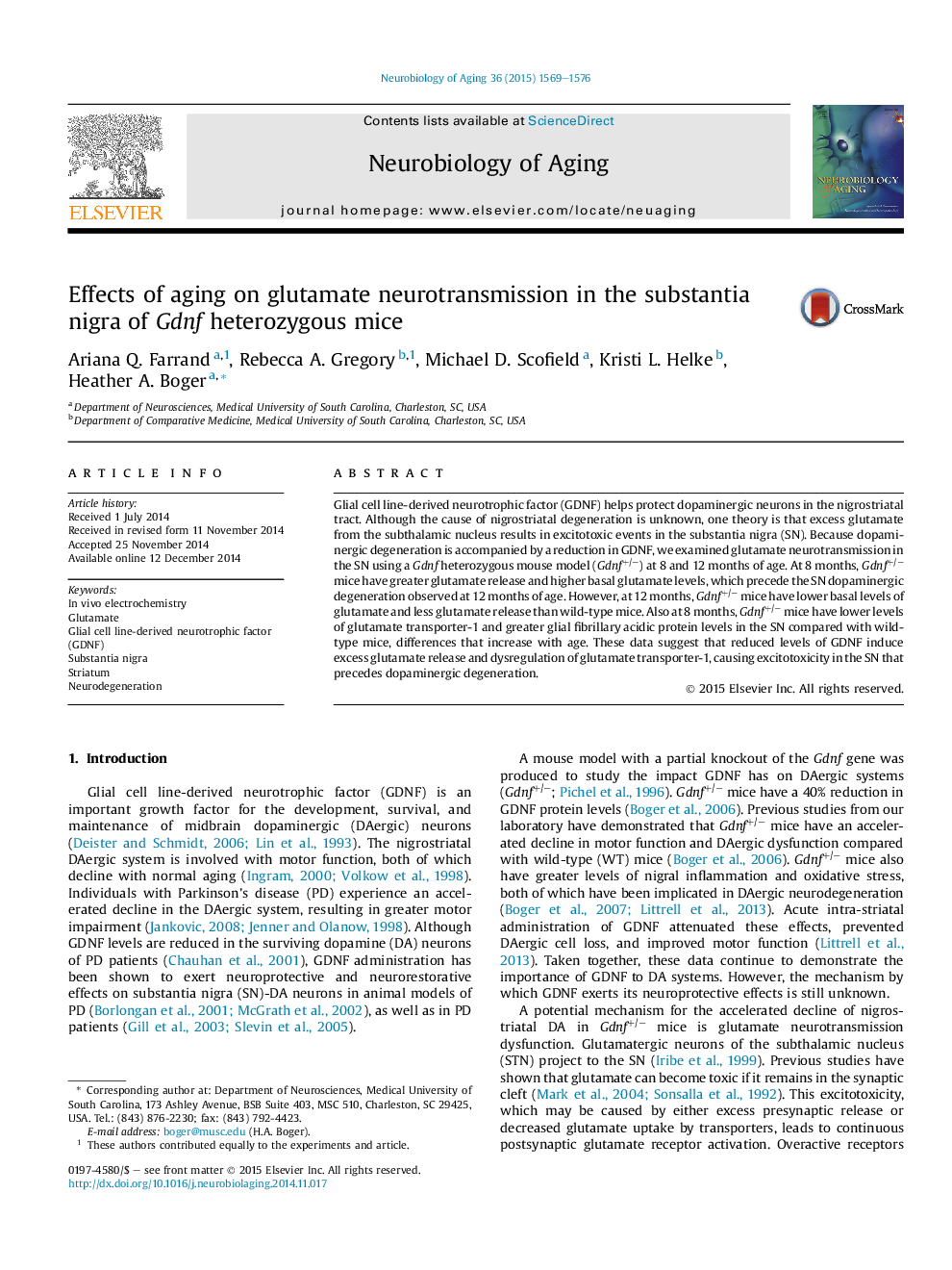| Article ID | Journal | Published Year | Pages | File Type |
|---|---|---|---|---|
| 6804719 | Neurobiology of Aging | 2015 | 8 Pages |
Abstract
Glial cell line-derived neurotrophic factor (GDNF) helps protect dopaminergic neurons in the nigrostriatal tract. Although the cause of nigrostriatal degeneration is unknown, one theory is that excess glutamate from the subthalamic nucleus results in excitotoxic events in the substantia nigra (SN). Because dopaminergic degeneration is accompanied by a reduction in GDNF, we examined glutamate neurotransmission in the SN using a Gdnf heterozygous mouse model (Gdnf+/â) at 8 and 12Â months of age. At 8Â months, Gdnf+/â mice have greater glutamate release and higher basal glutamate levels, which precede the SN dopaminergic degeneration observed at 12Â months of age. However, at 12Â months, Gdnf+/â mice have lower basal levels of glutamate and less glutamate release than wild-type mice. Also at 8Â months, Gdnf+/â mice have lower levels of glutamate transporter-1 and greater glial fibrillary acidic protein levels in the SN compared with wild-type mice, differences that increase with age. These data suggest that reduced levels of GDNF induce excess glutamate release and dysregulation of glutamate transporter-1, causing excitotoxicity in the SN that precedes dopaminergic degeneration.
Keywords
Related Topics
Life Sciences
Biochemistry, Genetics and Molecular Biology
Ageing
Authors
Ariana Q. Farrand, Rebecca A. Gregory, Michael D. Scofield, Kristi L. Helke, Heather A. Boger,
